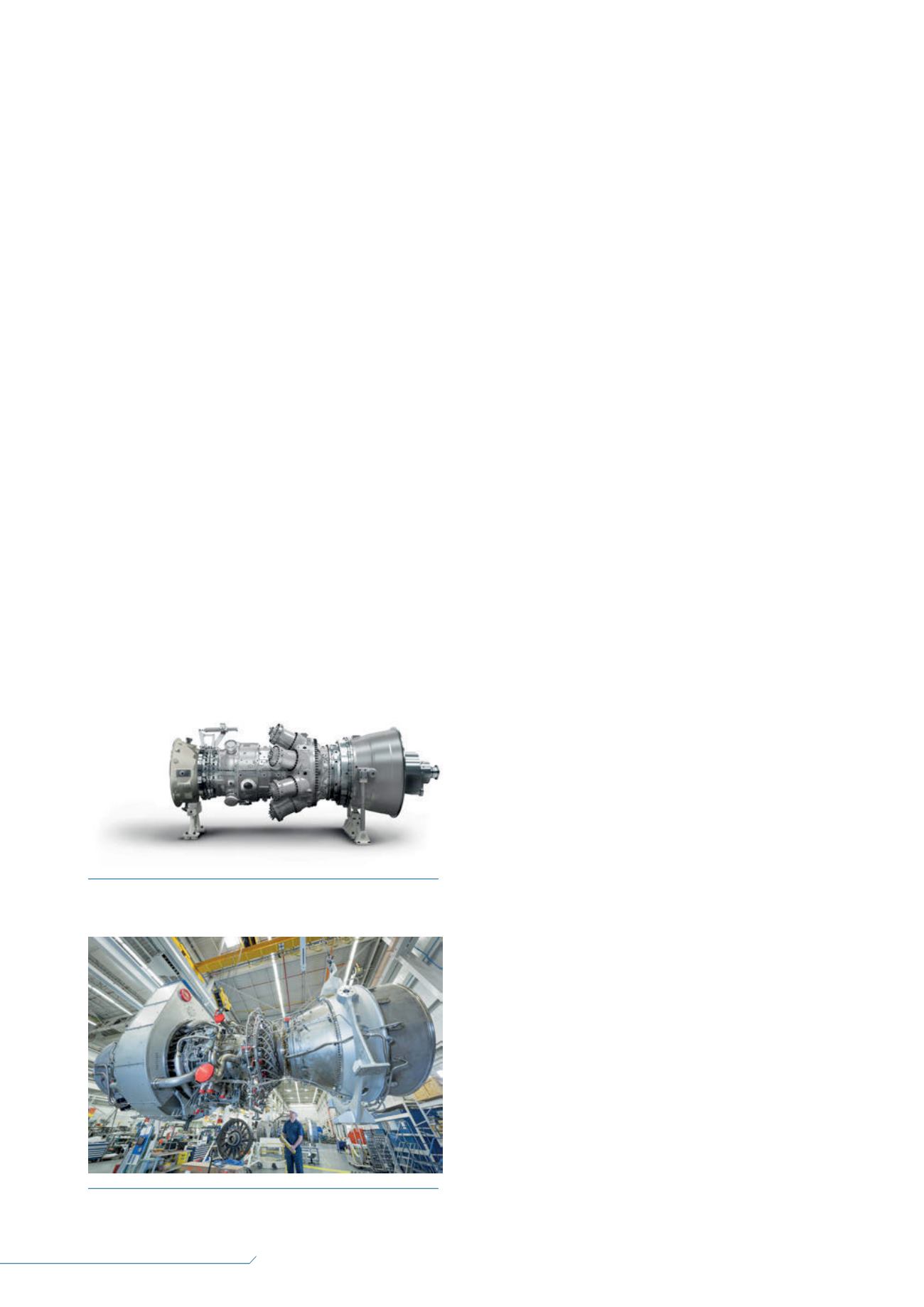
20
LNG
INDUSTRY
JULY
2016
Coatings systems that include thermally sprayed aluminium.
Dry gas seals.
CO
2
– one of the main components of the natural gas from
the wells – is separated at the LNG plant and compressed from
1 bar to 61 bar with a capacity of approximately 100 tph of CO
2
at
a rating of 10 MW. The CO
2
is then cooled to approximately 15°C,
at which point it condenses to liquid. The liquid CO
2
is then
pumped back to the field for permanent storage beneath the
seabed, thus minimising CO
2
emissions tax.
Lake Charles LNG project
The Dresser-Rand business offers the SGT-750 and
Industrial Trent 60 aeroderivative gas turbines. Each has been
selected by several operators and developers for their LNG
projects, both onshore and floating, due to their high efficiency,
light weight and speed range variation available from the free
power turbine.
These two turbines offer ISO efficiencies of 42%. When
considering that the fuel burned is LNG not sold, each
percentage of turbine efficiency will cost the operator
approximately US$24 million net present value (NPV) at
10 years. The NPV is based on a 10% discount rate for a
10 million tpy plant size and fuel gas evaluated as LNG at
US$6/million Btu.
Additionally, the Dresser-Rand business packaged an
aeroderivative gas turbine in a lightweight concept using a
torque tube base plate. This torque tube mini-module design
concept can be offered for all industrial gas turbines and can
reduce the weight of the total package by approximately 20 t.
A torque tube base plate offers torsional stiffness that is
superior to a box beam and provides easier access to the fuel
gas system, hydraulic starter, synthetic oil system, and other
controls. This design has been used for offshore applications for
more than 30 years, but could also be used for onshore plants to
minimise site erection cost and cycle time. For a 2 million tpy
floating LNG (FLNG) unit, for example, this torque tube concept
has demonstrated reduction in hull steel costs of approximately
US$2.8 million.
BG Group, which was acquired by Royal Dutch Shell in
February 2016, is developing a project to construct and operate a
15 million tpy LNG facility in Lake Charles, Louisiana, US. This
mega-plant design is meant to be efficient, environmentally
friendly and cost-effective.
BG went through a rigorous evaluation process to find the
right main refrigeration compressor driver for its plant. One of
the key project goals was to minimise adverse effects of the
facility’s operations on the environment.
Siemens was involved early in the process and
recommended its Industrial Trent 60 aeroderivative gas turbine
for the project, since the higher aeroderivative thermal
efficiencies provide low CO
2
, CO and NO
X
emissions tonnage
per year.
The aeroderivative gas turbine met the initial design criteria
for technical qualification as a compressor driver for the facility
and was included in a detailed driver selection study, which was
based on lifecycle costs for an assumed facility life of 25 years.
The following were the main criteria used during the
selection process:
Cost.
Footprint.
Thermal efficiency.
Controls simplicity for multiple compressors in parallel
operation.
Emissions.
Availability.
While BG Group standards mandated aeroderivative gas
turbines because of its ‘green’ requirements, a high level
comparison of industrial frames vs aeroderivative gas turbines
was conducted to obtain a general, rough evaluation of the two
types of engines. Heavy duty gas turbines (HDGT) required large
(~22 MW) starter/helper motors to meet the nominal production
rate of 5 million tpy of LNG per train.
The following main configurations were compared:
2 x industrial frame gas turbines with ~22 MW starter/helper
motors and inlet air chilling (IAC).
4 x large aeroderivative gas turbines + GT IAC on the mixed
refrigeration gas turbine only.
5 x smaller aeroderivative gas turbines + GT IAC.
The relative CAPEX values for aeroderivative vs industrial
frame gas turbines were comparable when the costs of the
additional power generation required to support the starter/
helpers were considered. However, the OPEX values were
significantly different. Fuel gas consumption was considered in
the evaluation based on the value of LNG not sold. In this
analysis, the substantially lower thermal efficiency of the
industrial frame gas turbines translated into higher OPEX.
Furthermore, using the Henry Hub (HH) price in the analysis still
demonstrated a cost benefit due to the high efficiency of the
aeroderivative gas turbine driver.
Figure 4.
The Siemens Industrial SGT-750 aeroderivative gas
turbine (source: Siemens).
Figure 5.
The Siemens Industrial Trent 60 aeroderivative gas
turbine (source: Siemens).


